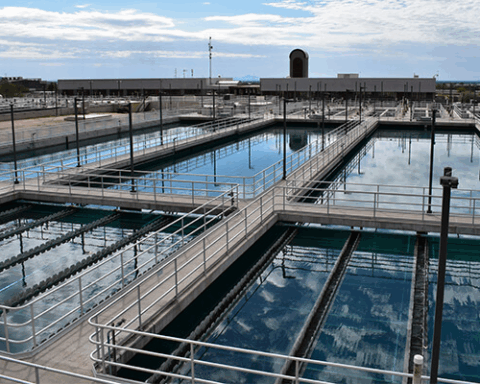Rules from the Environmental Protection Agency (EPA) intended to lower greenhouse gas emissions from the power sector are facing criticism and legal challenges over concerns that it will force power plants to shut down, making it harder to meet growing electricity demand.
During a recent board meeting of the Electric Reliability Council of Texas, the ERCOT CEO Pablo Vegas warned that the EPA’s new rules for carbon dioxide emissions, mercury and toxic air pollutants would force all of Texas’ coal-fired power plants to shut down.
”The greenhouse gas rule imposes much stricter CO2 emissions limits on existing coal and on certain new gas units,” Vegas said. “The rule will likely lead to the retirement of all coal-fired plants — that’s 13,600 megawatts of total summer capacity — and constrain the development of new natural gas-fired plants, exacerbating the reliability risks given forecasted load growth and the need for dispatchable, unlimited duration capacity.”
Energy demand is rising on the ERCOT grid, with the most recent projections stating that the grid will experience peak demand of 150,000 megawatts by 2030 — up from only 85,000 megawatts in the summer of 2023. To meet that demand, Vegas said the grid will need power sources that are “dispatchable,” meaning they can flip on and off as needed. He also said these power sources need an “unlimited duration capacity,” meaning the power must come from power plants rather than utility-scale batteries that can typically only provide power for one to four hours.
In April, the EPA simultaneously released finalized standards for greenhouse gas emissions from fossil fuel power plants alongside new standards for mercury and air toxins.
“By developing these standards in a clear, transparent, inclusive manner, EPA is cutting pollution while ensuring that power companies can make smart investments and continue to deliver reliable electricity for all Americans,” EPA administrator Michael Regan said in a press release when they were released.
The EPA was then sued by a handful of states run by Republicans, including Texas. The lawsuits to stop the new standards from going into effect are currently before a judge in a U.S. Court of Appeals in Washington, D.C. Decisions are expected to come later this summer, possibly as soon as July.
The greenhouse gas emissions standards would require power plants to invest in carbon capture and storage technology and improve their energy efficiency.
Existing coal plants that intend to operate past 2039 are required to capture 90% of their emissions by 2032. Existing coal plants that will be shut down before 2039 are exempt from the 90% emissions capture requirement, but they have to convert at least 40% of their capacity to run on natural gas instead of coal by 2030.
New natural gas plants must also be able to capture 90% of their emissions by 2032.
Carbon capture and storage has received major investments from the federal government. The Department of Energy announced earlier this year that it is investing $2.5 billion in the technology, starting with three projects, one of which is in Texas. When the initial projects are completed, they will represent an advancement in carbon capture as a whole, and are expected to prevent 7.75 million metric tons of carbon emissions from being released each year – the equivalent of 1.7 million gasoline-powered vehicles.
Not everyone sees the potential for carbon capture and storage. The carbon capture targets in the new EPA standards are a problem, Vegas said, because the technology “remains unproven at scale.”
The new rules around mercury pollution that target lignite coal would result in 6,500 megawatts of power capacity being shut down, he said. Mercury is a potent neurotoxin that can cause severe damage to the nervous system, particularly in developing fetuses and young children.
The EPA’s updated Mercury and Air Toxics Standards strengthen emission limits for coal- and oil-fired power plants, significantly reducing the particulate matter — also known as soot — concentration allowed and tightening mercury limits for plants powered by lignite coal. The rule mandates the use of continuous emission-monitoring systems for particulate matter compliance and is projected to dramatically cut emissions of mercury, particulate matter and other hazardous air pollutants. The standards will be in effect starting in 2028.
The rules were praised by health advocates when they were announced.
“The new rules to clean up air pollution from power plants are good news for everyone, especially if there is a power plant near where you work, live or study,” Harold Wimmer, President and CEO of the American Lung Association, said in a press release.












